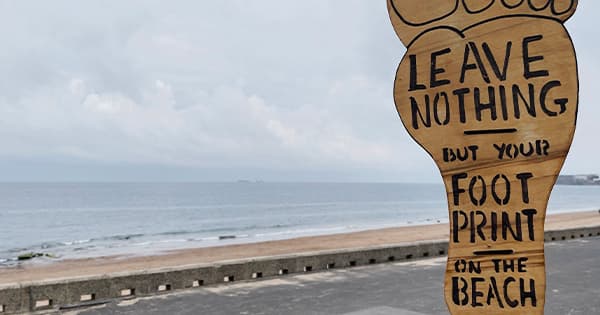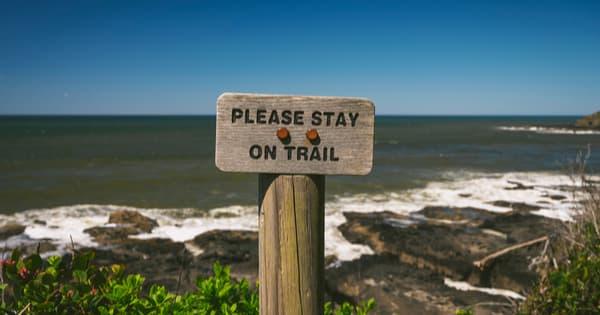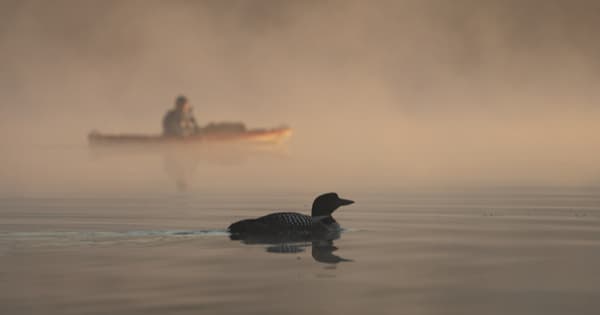Applying the Principles of Leave No Trace
In the 30-odd years that the phrase has been in widespread use, "Leave No Trace" has emerged as the mantra for a generation of outdoor recreation fans. From signs in National Parks Service campsites, to posters in gear shops, the concept of "leave only footprints, take only memories" has defined the outdoor experience for millions of people worldwide.

These days, the Leave No Trace ideal is promoted and maintained by the nonprofit Leave No Trace Center for Outdoor Ethics, headquartered in Boulder, Colorado. Defined as a program that "strives to educate visitors about the nature of their recreation impacts as well as techniques to prevent and minimize such impacts," Leave No Trace remains an important part of backcountry travel, and something that every outdoor enthusiast should understand.
But aren't the principles of Leave No Trace geared primarily toward the land-based camping and hiking set? What does this have to do with paddling?
It's true that Leave No Trace deals mainly with "land abuse," but the ideals apply to all who enjoy time in the outdoors, paddlers included. After all, paddlers camp, paddlers hike in to their campsites, paddlers have waste to pack out. Below you'll find the seven principles of Leave No Trace: learn them, know them, and live by them.
Plan ahead and prepare
In short, you need to know where you're going before you get there, understand if it's a fragile or protected area, and be prepared in case of an emergency. Leave No Trace encourages adventurers to plan their trips carefully "to avoid times of high use" (like holiday weekends) and to travel in small groups. This will lessen your impact on the land and help keep damage to a minimum.
Travel and camp on durable surfaces

You'd be surprised how much damage one person can do in the backcountry. From tramping waterfront plant life, to scattering low-lying scrubs, it's best to stay away from areas that can't handle your presence (cleared areas, existing trails, and rock clearings are the goal). Keeping to trails and established campsites will help maintain the wilderness areas that you travel through. Paddlers should also remember to set up camp at least 200 feet from the water to protect fragile riparian areas. We've all seen damage to our paddling areas; we don't need to be contributing to that problem. Stick to established beaches and landing sites.
Dispose of waste properly
"Pack it in, pack it out," is the general rule of Leave No Trace when it comes to waste. Toilet paper, trash, and other waste needs to come out of the backcountry with you. Beyond that, you need to bury human waste at least 200 feet from your campsite, the trail, and the nearest water supply.
Leave what you find
Part of low-impact travel is the idea that you should leave the area in as natural a state as possible when you move on. "Leave rocks, plants, and other natural objects as you find them," the Center advises. "Examine, but do not touch cultural or historic structures and artifacts." This also extends to the flora and fauna; don't transport local plants and animals out of the area and attempt to relocate them at home. Keep in mind that non-native and invasive species are already a serious problem in many parts of the country.
Minimize campfire impacts
Of all the things humans do in the backcountry, the campfire is one of the most destructive. Their impact is so long-lasting that many areas have outlawed open fires all together. Where campfires are allowed, only use established fire pits and circles, and be sure to burn everything down to ash before leaving the site (fuel can and does spark back up again if the conditions are right). Better yet, bring a small cooking stove and candle lantern, and skip the fire.
Respect wildlife

Paddlers are often keen observers of nature and know to give a wide berth when watching or photographing wildlife. But, don't forget that these creatures are very definitely wild, and you're visiting them on their turf. Feeding wildlife not only puts your group at risk (what happens when those animals get hungry again and come looking for more?), it spoils their survival instincts, disrupts the order of nature, and causes all kinds of problems down the road. Steer clear; don't impact them, and they won't impact you.
Be considerate of other visitors
This one just boils down to respect. "Be courteous, [and] yield to other users on the trail," the principle reads. "Take breaks and camp away from trails and other visitors." Remember, you don't want to leave a negative impact on their outdoor experience, either.
For additional information about the seven principles of Leave No Trace, visit the Center for Outdoor Ethics' web site at lnt.org.
Tim Sprinkle writes and paddles around his home in central Virginia. His work has appeared in Seakayaker, Paddler, and a number of other publications.
Related Articles
As paddlers, we depend on pristine natural environments to enjoy our sport, and many paddlers fancy…
So, you are finally out on the water and itching to spend more time outdoors – maybe go a bit further…
Paddling is a fun and safe activity, especially if you pay attention to these common-sense rules --…
Before I was domesticated, I spent more than a decade working paddling gigs between paddling trips.…



